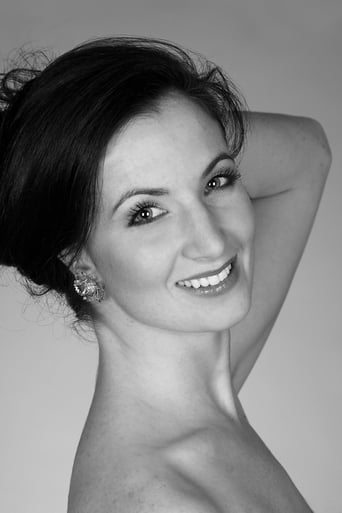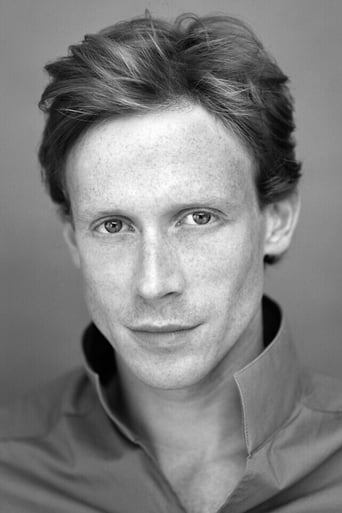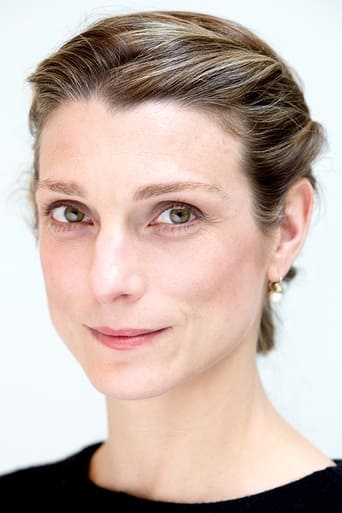jarobledo3
Creating a ballet of "Alice's Adventures in Wonderland" cannot be an easy thing to manage; at least 75% of this timeless tale is in its writing, and so telling the story without any dialogue is a tough ordeal. This is why so many silent films have been lost, or forgotten: sound was the golden segment that allowed for filmmakers to build on the pages and text of Carroll's story. The 1915 silent film, for example, tries to include as much of Carroll's writing in the title cards, but still can't capture quite everything. Obviously, a ballet, having no "title cards" or words spoken/shown at all, must be even tougher.That being said, the lack of dialogue in this adaptation is to be expected, so it can be given a little leeway.We open up with a scene of "the real Alice," in the real world (the entire opening is complete historical hogwash), who, similar to the 1999 film adaptation, is at a garden party. When her secret sweetheart, a servant boy named Jack, is fired by her stern, vindictive, slightly nosy mother (not unlike the real Mrs. Liddell, I understand), Alice tries to seek comfort in a family friend...none other than Charles Dodgson, a.k.a. Lewis Carroll. Without warning, Carroll himself transforms into the White Rabbit...and the madness begins.In terms of Carroll's original story, the scenes with the Giant Puppy, Mock Turtle, and Gryphon are skipped (although the Turtle appears in a cameo role at the Caucus-Race), and the Cheshire Cat, Knave of Hearts, and White Rabbit are all given larger roles. The scene with Bill the Lizard and the rest of the Rabbit's servants is also skipped, possibly because, as a representation of Carroll, the Rabbit is friendlier with Alice (though still neurotic as ever), so ordering her about and mistaking her for Mary Anne doesn't make much sense. Instead, this scene is replaced with him taking her on a little boat ride, which may be a reference to the Sheep scene from "Through the Looking-Glass," or the real boat ride Carroll took the Liddell sisters on, and first told them the story of "Alice," or even both. The Caterpillar scene occurs later in the show than in the story, appearing shortly after the Mad Tea Party.Like the 1999 film, most of the characters are based on real people at the Garden Party: a top-hat wearing magician becomes the tap-dancing Mad Hatter; a Vicar and a Verger become the March Hare and the Dormouse; Jack becomes the Knave, while Mrs. Liddell becomes the Queen of Hearts, and Dean Henry Liddell plays the King of Hearts (who's often-sleeping character reminds me of the Red King from "Through the Looking-Glass"). A visiting Rajah turns into the Caterpillar, Carroll, as said before, is the White Rabbit, and a rather ugly Duchess who comes to the party becomes Carroll's fictional Duchess in Wonderland. The performances are spectacular: Lauren Cuthbertson is obviously too old for the part, but her performance is soulful, yet innocent, and there's an air of both determination and nearly supernatural curiosity about her, which is just great. Steven McRae's Hatter, tap-dancing around at the Tea Party, steals the show the instant the light hits him. Eric Underwood's slinky Arabian Caterpillar is both mysterious and slightly seductive, and Simon Russell Beale throws himself into the drag role of the Duchess(es) with zeal.As is the case with many, if not all, "Alice" adaptations, a large part of what makes this stand out is the design. Very little here holds obvious roots in John Tenniel's illustrations – the eerie, living-jigsaw-puzzle Cheshire Cat and Pig-Baby puppet are the only immediate things I can think of, looking very much like carbon copies of the illustrations, which, for me, is a plus – I think, in terms of art and style, this ballet comes closer to Carroll's personal vision than any other show before. Everything is lavish, as to be expected from the Royal Opera, with the effects a mix of animated projections and stage techniques. The odd exceptions are present, of course. Ironically, one of these exceptions is the Queen of Hearts, played with a saucy flair by Zenaida Yanowsky, and a direct contrast to the refined Mrs. Liddell. When the Queen first appears, she is in a gigantic plastic dress(?) that rolls across the stage. When she finally steps out of this plain, yet absurd, garment, she is wearing nothing more than a simple red ballet uniform. Both are hardly befitting the regal presence of the Queen, and are not "revealing" enough to work with the character's "sauciness" in this version. The Executioner and the March Hare have equally bad costumes: the Hare's pastel suit makes him almost disappear amidst the flashes of vivid colors everywhere else, and the Executioner looks a biker.This show is not for kids: some characters, like the Mad Hatter, look slightly grotesque in appearance, while others, like Caterpillar and the Queen, have a distinct "maturity" to them. The scene of "Pig and Pepper" is given a shocking, Hellish tone: red light illuminates everything, butchered pigs are everywhere, the Cook runs around, quite literally chewing the scenery, while brandishing a cleaver, and the Duchess' apron is stained with blood. (All this makes us wonder what happens to the Baby, once it transforms into a Pig...and is "saved" by the Duchess from Alice.) All that's well and good, but the story's end is another problem: Alice awakens...and, suddenly, we're not in Victorian England, nor Wonderland, but the Modern World. What was going during the time preceeding? A dream within a dream? If so, how did she GET all that into her head? Despite this show's flaws, it has a great look, and the dancing is choreographed superbly. The music is beyond wonderful, and, while the story needs some work, lovers of ballet, art, and "Alice" should enjoy this.
TheLittleSongbird
I love classical music, ballet and opera and have done for as long as I can remember. I was all for seeing a ballet adaptation of Alice in Wonderland. The story itself with its colourful characters and somewhat episodic but interesting structure is timeless, and I was not really worried about its transition from book to ballet form as it worked with The Tales of Beatrix Potter(though all the stories of hers combined are much simpler than Alice in Wonderland in all fairness).This was a big surprise, because there were scenes that I was initially worried of whether they would work, such as the Mad Matter's Tea Party, and a real treat for any ballet fans or for any children introducing themselves to this great art. It does do a fine job with a timeless but somewhat problematic story. Like the book itself, the basic structure is episodic, but I don't consider that a problem. My only slight criticism is the slightly overlong first act where some of the comedy and drama doesn't always come together, but there are so many things to like about this Royal Opera House production you probably won't mind.First of all, Joby Talbot's music is outstanding. I was interested in what it would be like, I have heard a few of his compositions before and they are very nice and interesting on the whole. The percussion-driven ballet score he composed here gives the production a certain magic that is very much needed, and is also energetic and memorable. Christopher Wheeldon's choreography also impresses in my view. It uses all these traditional moves that we are used to seeing in ballet productions, and they are used to make for some genuinely entertaining scenes such as the Queen of Hearts' Rose Adagio, tender "love" duets, a thrilling ensemble dance with cards and my personal favourite the tap-dancing Mad Hatter.I loved the look of the production as well. The prologue is very charming and beguilingly danced and sets the tone of the whole production very nicely. The costumes and sets are consistently very colourful, and the effects are not only gorgeous but have an appealing oddball and hallucinatory sense about them. The second half is even better than the first half, with the comedy a little more focused and the pace and dancing more exciting than before.There is much to praise in the performances too, everybody does a solid to outstanding job, but I would like to give honourable mention to Simon Russell Beale who sends up a comical storm in both his acting and dancing. Lauren Cuthburtson is absolutely excellent in the title role too, not bland in any way, she dances a dream, looks the part and manages to be funny, engaging and un-twee throughout. Barry Wordsworth also does a rock-solid job conducting the superb orchestra whose playing is suitably stylish and filled with great energy.Overall, a treat to watch and even better than I thought it would be. 9/10 Bethany Cox





